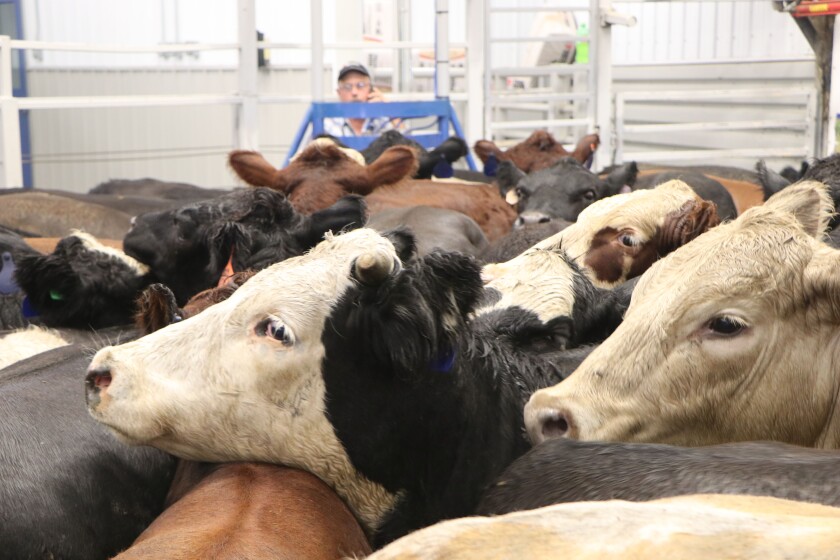Elevate Your Competence with Bagley Risk Management
Elevate Your Competence with Bagley Risk Management
Blog Article
Understanding Livestock Danger Security (LRP) Insurance Coverage: A Comprehensive Guide
Browsing the world of animals threat protection (LRP) insurance can be a complicated endeavor for lots of in the agricultural sector. From exactly how LRP insurance policy operates to the numerous coverage options available, there is much to uncover in this extensive overview that might potentially shape the method animals manufacturers come close to danger administration in their services.

How LRP Insurance Policy Functions
Sometimes, understanding the auto mechanics of Animals Threat Protection (LRP) insurance coverage can be complicated, however breaking down exactly how it works can supply quality for ranchers and farmers. LRP insurance is a danger administration tool created to secure animals manufacturers versus unanticipated rate decreases. It's vital to keep in mind that LRP insurance is not a profits warranty; rather, it concentrates exclusively on cost danger security.
Eligibility and Coverage Options

When it involves insurance coverage options, LRP insurance coverage supplies producers the versatility to pick the coverage level, insurance coverage duration, and recommendations that best fit their danger monitoring needs. Protection degrees normally range from 70% to 100% of the anticipated finishing worth of the insured livestock. Producers can likewise choose insurance coverage durations that straighten with their production cycle, whether they are insuring feeder cattle, fed cattle, swine, or lamb. Endorsements such as cost threat protection can additionally personalize insurance coverage to protect against unfavorable market changes. By recognizing the qualification standards and insurance coverage options available, animals manufacturers can make enlightened choices to handle danger successfully.
Pros and Cons of LRP Insurance
When evaluating Animals Risk Protection (LRP) insurance, it is necessary for livestock producers to consider the negative aspects and advantages intrinsic in this danger administration device.

Among the main advantages of LRP insurance is its capacity to offer defense versus a decline in animals costs. This can help guard producers from financial losses resulting from market changes. Additionally, LRP insurance coverage supplies a level of adaptability, enabling manufacturers to tailor protection levels and plan durations to suit their specific needs. By securing an assured price for their animals, manufacturers can better take care of risk and plan for the future.
One constraint of LRP insurance coverage is that it does not safeguard versus all types of risks, such as disease outbreaks or all-natural disasters. It is important for manufacturers to very carefully evaluate their specific danger direct exposure and monetary situation to figure out if LRP insurance coverage is the appropriate danger management device for their operation.
Recognizing LRP Insurance Policy Premiums

Tips for Optimizing LRP Advantages
Making best use of the benefits of Livestock Danger go to my blog Defense (LRP) insurance requires strategic planning and positive threat monitoring - Bagley Risk Management. To maximize see it here your LRP protection, take into consideration the adhering to suggestions:
Regularly Evaluate Market Conditions: Remain educated concerning market fads and price fluctuations in the animals industry. By keeping an eye on these variables, you can make informed choices about when to purchase LRP protection to secure versus prospective losses.
Set Realistic Insurance Coverage Levels: When selecting coverage levels, consider your production prices, market price of animals, and prospective dangers - Bagley Risk Management. Setting realistic protection levels guarantees that you are effectively protected without paying too much for unneeded insurance coverage
Diversify Your Protection: Rather of relying exclusively on LRP insurance, consider expanding your risk administration techniques. Integrating LRP with various other risk monitoring tools such as why not try these out futures contracts or choices can offer comprehensive coverage against market uncertainties.
Testimonial and Change Protection Frequently: As market conditions transform, occasionally evaluate your LRP insurance coverage to ensure it straightens with your existing threat exposure. Adjusting coverage levels and timing of purchases can aid maximize your threat defense strategy. By complying with these tips, you can take full advantage of the advantages of LRP insurance policy and guard your animals procedure versus unanticipated risks.
Final Thought
To conclude, livestock danger security (LRP) insurance is a useful device for farmers to take care of the financial threats connected with their livestock operations. By recognizing how LRP functions, eligibility and insurance coverage alternatives, as well as the benefits and drawbacks of this insurance policy, farmers can make enlightened decisions to shield their resources. By carefully thinking about LRP costs and implementing methods to take full advantage of advantages, farmers can mitigate prospective losses and make sure the sustainability of their operations.
Animals manufacturers interested in getting Livestock Threat Defense (LRP) insurance can check out a range of qualification requirements and insurance coverage alternatives customized to their specific livestock operations.When it comes to insurance coverage choices, LRP insurance supplies producers the versatility to choose the coverage level, insurance coverage period, and recommendations that ideal fit their threat monitoring requirements.To realize the ins and outs of Livestock Threat Security (LRP) insurance policy fully, comprehending the aspects affecting LRP insurance premiums is crucial. LRP insurance coverage premiums are determined by different elements, including the protection level selected, the expected rate of livestock at the end of the insurance coverage period, the kind of livestock being guaranteed, and the length of the protection duration.Testimonial and Change Coverage Consistently: As market problems alter, occasionally review your LRP protection to ensure it straightens with your existing threat exposure.
Report this page